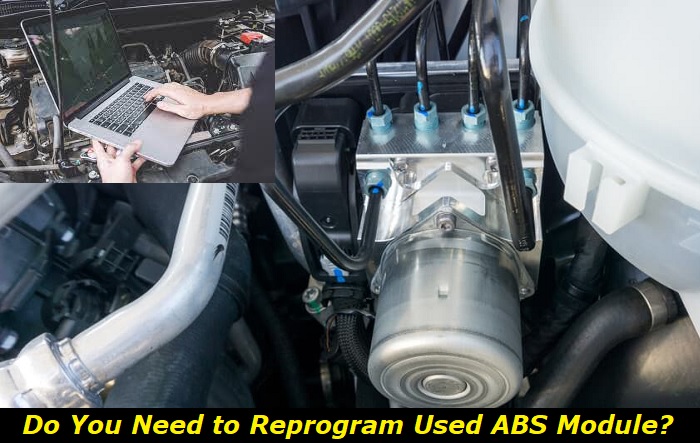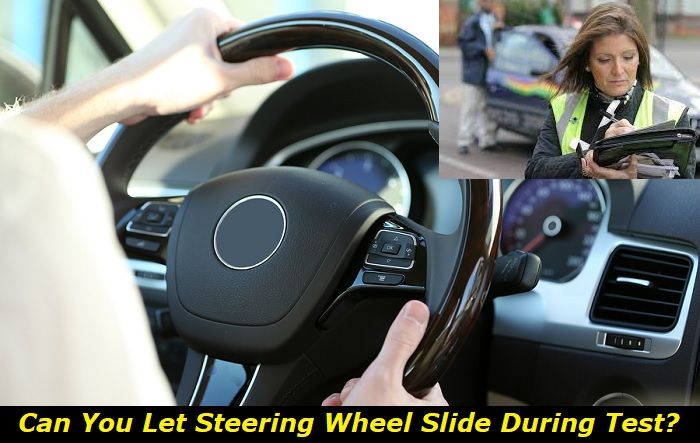You need to have a used ABS Module reprogrammed before its installation in your vehicle. The ABS Module has programming that includes information such as the Vehicle Identification Number, also known as "VIN" which is specific for every vehicle.
ABS problems highlights
- Module's importance:High
- Prone to failure:No
- Reasons for failure:Water, physical damage
- Ways to reset:No reset will help
- Sphere of control:ABS system
- Symptoms of failing:ABS light, no ABS available, traction control failure
- Price to repair:Repair almost impossible
- Price to replace:$350 - $900

What is an ABS?
As we already know, ABS or anti-lock braking system is a safety anti-skid braking system that helps the driver keep control over his vehicle during heavy braking by preventing the wheels from locking up.
It is used not only in cars but also in other vehicles, such as motorcycles, trucks, buses, or even aircraft. ABS not only improves the control freak of the vehicle, but it decreases stopping distances in dry and slippery places as well.
Therefore, it is really important for you to have functional ABS. Your ABS Module stopped working and therefore you bought a used one. But, what should you do from now on? We'll discuss more on what the ABS Module is and if and how it needs to be reprogrammed. Stay tuned.
What is an ABS Module?
The ABS module, also known as ABS ECU or ABS Controller, is a set of different kinds of electronic components that are controlling the ABS system itself. Sensors that are located within the ABS module monitor the speed of each of the four wheels and then they send signals into the ABS Pump.
The ABS pump restores the pressure to the hydraulic brakes lost because of hydraulic braking valves that released it. The ABS Module processes the signals from each wheel speed sensor and if it detects that wheels are slipping it signals the braking valve release to stop the wheels from slipping. ABS module also limits the braking force, commonly known as EBD.
What Are the Signs of a Dysfunctional ABS Module?
When it comes to dysfunctional ABS modules, there are various signs you should be aware of. But don't worry! We prepared a short bullet list of the most common ones, so you'll know when your ABS module needs to be repaired or replaced.
- ABS Light on:The most visible sign that indicates that your ABS module is not in great condition is obviously when the ABS Light flares up. You should take it as seriously as the Check Engine light.
- Unresponsive Brake Pedal:This is a very serious problem that indicates the dysfunction of the ABS Module. For your safety, you should replace or repair your ABS Module as soon as possible.
- Weak Operation of Brake Pads:When your brake pads need a lot of pressure in order to work, it can be a warning sign of a dysfunctional ABS module. Remember, brake pads should function well even with a little effort.
- Brakes are locked up:The ABS Module is behaving unpredictably when the brakes begin to lock up.
Replacement of a Dysfunctional ABS Module
After we discussed the exact warning signs of a dysfunctional ABS module you can easily know whether your ABS Module is dysfunctional or not. You may ask how the replacement of dysfunctional ABS Module Works. Can you do it yourself? Or should you leave this work to a qualified mechanic? How much does it cost then? Don't worry, we'll cover all these questions in this paragraph.
- Can I replace the ABS Module by myself?
If you are not a qualified mechanic, you should not replace a dysfunctional ABS Module by yourself. In fact, you should seek professional help from a licensed mechanic as soon as possible.
- How much does it cost to replace an ABS Module?
Depending on the specific brand and model, the replacement costs of an ABS Module are various, starting from $200 all the way up to $1,500.
- How does the replacement of the ABS Module work?
The mechanic first inspects the ABS Module and then, if needed, confirms a replacement. Then he simply replaces the old ABS Module with a new one. After this, he takes care of your vehicle's braking system by flushing it out and adding a new braking fluid. Lastly, he inspects if everything within the braking system is okay.
How to Clean an ABS Sensor
But what if you are still not sure if the ABS Module needs to be replaced? Before spending money on its replacement, you can try cleaning an ABS sensor itself. If your ABS doesn't work as well as when it was new, this method can help you save a lot of money and more importantly, keep you and your family safe when driving. If this method doesn't help, you should consider contacting a professional mechanic.
- Park your vehicle on a hard and flat surface
Before you access the ABS Sensor which is located along the body of the wheel hub, you should find a safe parking space, which has a flat and hard surface.
- Use a car jack to lift your vehicle
Once you find a safe parking space, lift your car using a car jack. Carefully position the car jack at the designated jack point and engage it with caution.
- Remove the lug nuts from the tire using a wrench
If you don't want to lose them, you should put them in a safe place aside. Then, safely pull the wheels off the vehicle.
- Find the ABS Sensor
Depending on the specific brand and model that you have, some cars have an ABS Sensor on each wheel while others don't. As already mentioned, the ABS Sensor is located along the backside wheel hub. This process can be a little tricky, however, if you are having a real struggle finding the ABS Sensor, it means that your vehicle probably has disguised sensors instead of open sensors. If that's the case, you don't need to clean the sensors since they are protected from all the dirt. However, if you have a problem with these sensors, you should contact a licensed and professional mechanic.
- Use Allen Wrench to remove the bolt that covers the ABS Sensor
Then, put the bolt in the safe place aside.
- Use a pair of pliers to wiggle loose the ABS Sensor
Use these pliers to grasp the sensor and gently move it back and forth until it pops out.
- Clean the sensor
To remove any dirt, blow canned air into the place where the ABS Sensor was located. Use safety goggles to protect your face from that dirt. Gently clean the entire sensor by using a clean and dry microfiber towel. If you find some stubborn rust, use a wire brush and patiently grind it away. Apply only a small amount of pressure, since a lot of pressure can cause some damage.
- Reinstall the sensor
After you cleaned the sensor, carefully reposition it. Ensure that the wiring is restored to its original configuration. Then, push it down to secure it in place. Put the bolt in its original place and tighten it with a wrench.
- Put the wheels back
Place the wheels back in their original place, put the lug nuts back, and screw them tightly. After the wheels are secured, safely disconnect the car jack.
Conclusion
We hope that this article helped you find out more information about ABS Modules and that this information will help you overcome the problems with your ABS Module that you may be facing. We discussed the definition of the ABS System and the ABS Module, as well as what are the signs of a dysfunctional ABS Module.
More importantly, we gave you a detailed point list on how to clean the ABS Sensor itself, since that can be a reason why your ABS light is on. Make sure to share this article with your friends or family members, since it can help them as well.
About the authors
The CarAraC research team is composed of seasoned auto mechanics and automotive industry professionals, including individuals with advanced degrees and certifications in their field. Our team members boast prestigious credentials, reflecting their extensive knowledge and skills. These qualifications include: IMI: Institute of the Motor Industry, ASE-Certified Master Automobile Technicians; Coventry University, Graduate of MA in Automotive Journalism; Politecnico di Torino, Italy, MS Automotive Engineering; Ss. Cyril and Methodius University in Skopje, Mechanical University in Skopje; TOC Automotive College; DHA Suffa University, Department of Mechanical Engineering






Add comment